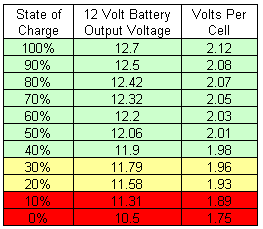Just wondering if anyone has any experience with one of these? https://www.amazon.com/Digital-Batt.../B07929Y5SZ/ref=psdc_2236627011_t2_B07R8C9JW9
On paper it sounds like a pretty cool and inexpensive gadget that could save your battery from over discharge damage (like mine has).
It has user adjustable voltage disconnect and reconnect, so for instance if you have your fridge running off the battery and your solar panel out charging the battery, and it clouds over while your gone, you could have it set to cut the battery's load off when the battery voltage reached 12.2 volts (approx 50% capacity), then if the sun returns and the panel starts charging again you could have it set to reconnect the battery to your load when it reaches 12.8 V charge. Either one of those parameters are adjustable to whatever you'd like based on the type of battery you are using, and its likes and dislikes.
Sounds cool, but maybe someone else has been there, done that, so wanted to check if there is any experiences or considerations?
Thanks!
On paper it sounds like a pretty cool and inexpensive gadget that could save your battery from over discharge damage (like mine has).
It has user adjustable voltage disconnect and reconnect, so for instance if you have your fridge running off the battery and your solar panel out charging the battery, and it clouds over while your gone, you could have it set to cut the battery's load off when the battery voltage reached 12.2 volts (approx 50% capacity), then if the sun returns and the panel starts charging again you could have it set to reconnect the battery to your load when it reaches 12.8 V charge. Either one of those parameters are adjustable to whatever you'd like based on the type of battery you are using, and its likes and dislikes.
Sounds cool, but maybe someone else has been there, done that, so wanted to check if there is any experiences or considerations?
Thanks!

